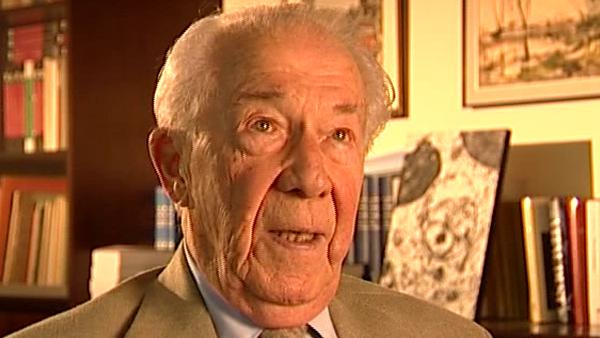NEXT STORY

The discovery of lysosomes
RELATED STORIES

NEXT STORY

The discovery of lysosomes
RELATED STORIES


|
Views | Duration | |
|---|---|---|---|
| 41. The sixth enzyme: Uricase | 157 | 04:50 | |
| 42. The discovery of lysosomes | 1 | 447 | 02:32 |
| 43. A passion for bioenergetics | 128 | 03:06 | |
| 44. Uptake and digestion in lysosomes | 132 | 04:10 | |
| 45. Autophagy: Self-eating by cells | 257 | 03:04 | |
| 46. 'Suicide bags': Lysosomes in pathology | 140 | 02:15 | |
| 47. Pathological implications: Osteoclasts and osteoblasts | 95 | 03:12 | |
| 48. Pathological implications: The work of Géry Hers | 97 | 02:32 | |
| 49. Glycogen storage diseases: Géry Hers and Gerty Cori | 131 | 04:46 | |
| 50. Glycogen storage diseases: Autophagy | 116 | 02:30 |


I mentioned a sixth enzyme. The sixth enzyme was not like the other five; a hydrolytic enzyme, it had not... no... no acid pH optimum and it wasn't latent. And this was what was called, at that time, uricase. Uricase is really... it's an oxidising enzyme... it's urate oxidase; it oxidises uric acid, producing hydrogen peroxide – it converts oxygen to hydrogen peroxide with hydrogen removed from... from urate – and this enzyme, also, turned out to have the same localisation in the centrifuge... the fractions... the centrifugal fractions. So urate oxidase was a question mark, but the other five seemed clearly to be together in the same kind of particle, and we are now in 1955. In addition to Pressman and Gianetto, two Belgian co-workers were associated with this work: this young lady, Françoise Appelmans, who I mentioned before, was a medical student; Robert Wattiaux, who was another medical student. And so, looking at those results, I said, 'Well, finding together in the same kind of membrane limited sac-like particle enzymes that hydrolyse RNA, DNA, proteins, phosphate esters and glycosidic compounds – such a mixture can have only one physiological function, which is digestion.' Because it acts on two different substrates or two many different substrates, only a digestive system would have to... just like our stomach or our intestine, has to handle all kinds of natural compounds at the same time. And so I came to the conclusion this new particle must have a digestive function; let us call it lysosome. Now this was a... this was a memory of my classical studies, learning Greek, and lys... lyso came from the Greek luien [sic], which means 'cut in pieces', and, of course, it's the same word in analysis, and so on. Soma is 'body', and so lysosome meant, in my mind, lytic digestive body. That was a tremendously unfortunate mistake, because by the time I invented that word, Alexander Fleming, the man who discovered penicillin... Alexander Fleming had, much earlier in the '20s, discovered a compound that would kill bacteria – it turned out to be an enzyme that acts on the bacterial cell wall – and Fleming had called this substance lysozyme, a lytic enzyme, and stupidly I decided, well, biochemists must be sufficiently educated to know the difference between soma – body – and zume – yeast – which is the Greek root of the word enzyme. I was sadly mistaken in doing that, and so even today I am still sometimes given credit due to Alexander Fleming as having discovered lysozyme. But too late to change and the word lysosome has found its way into textbooks... cell biology textbooks, and, of course, much is now known about them.
Belgian biochemist Christian de Duve (1917-2013) was best known for his work on understanding and categorising subcellular organelles. He won the Nobel Prize in Physiology or Medicine in 1974 for his joint discovery of lysosomes, the subcellular organelles that digest macromolecules and deal with ingested bacteria.
Title: The sixth enzyme: Uricase
Listeners: Peter Newmark
Peter Newmark has recently retired as Editorial Director of BioMed Central Ltd, the Open Access journal publisher. He obtained a D. Phil. from Oxford University and was originally a research biochemist at St Bartholomew's Hospital Medical School in London, but left research to become Biology Editor and then Deputy Editor of the journal Nature. He then became Managing Director of Current Biology Ltd, where he started a series of Current Opinion journals, and was founding Editor of the journal Current Biology. Subsequently he was Editorial Director for Elsevier Science London, before joining BioMed Central Ltd.
Tags: 1955, Robert Gianetto, Berton Pressman, Françoise Appelmans, Robert Wattiaux, Alexander Fleming
Duration: 4 minutes, 50 seconds
Date story recorded: September 2005
Date story went live: 24 January 2008